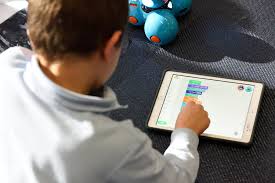How can 3rd graders make learning fun?
Make Learning Fun for Your 3rd Grader
- Give your child a new board game. Choose an age-appropriate one that taps your child’s interests — whether she’s passionate about princesses, horses, baseball, or outer space.
- Play cards. Teach your child some of your childhood favorites.
- Head outside for active learning fun.
What should a 3rd grader be learning? Third-grade math expects students to know their addition, subtraction, multiplication and division fact families and use them in equations and two-step word problems. In addition, 3rd graders need to know how to: Read and write large numbers through the hundred thousands, knowing the place value for each digit.
What can I teach a 3rd grader?
Reading, Writing, and Language
- Understand different types of sentences and the main parts of speech.
- Analyze poetry.
- Learn how affixes work.
- Learn how to do basic research.
- Write a story with a beginning, middle and end.
- Engage in collaborative discussions.
What are 3rd graders interested? Third-Grade Science, Social Studies, and Technology
Third grade will introduce your child to a whole new world of fascinating subjects like science, social studies, and technology that may help him develop new interests and hobbies. Your third-grader will: Review the names of states and learn the state capitals.
How can 3rd graders make learning fun? – Additional Questions
How do you engage in 3rd grade?
10 Rules of Engagement
- Start Class with a Mind Warm-Up.
- Use Movement to Get Kids Focused.
- Teach Students How to Collaborate Before Expecting Success.
- Use Quickwrites When You Want Quiet Time and Student Reflection.
- Run a Tight Ship When Giving Instructions.
- Use a Fairness Cup to Keep Students Thinking.
How do I become a good 3rd grade teacher?
Tips for Teaching Third Grade:
- Stop stressing about the testing! I mean it!
- Read to them! #everyday.
- Third grade mathematicians still need manipulatives and pictures.
- Reward positive behavior and academic growth.
- Plan to spend LOTS of time teaching and practicing rules and procedures at the beginning of the year.
What is so important about 3rd grade?
Third grade has been identified as important to reading literacy because it is the final year children are learning to read, after which students are “reading to learn.” If they are not proficient readers when they begin fourth grade, as much as half of the curriculum they will be taught will be incomprehensible.
Why is 3rd grade so hard?
If you have reluctant readers (and I do), third grade may really be a struggle. They have to read, comprehend, and translate knowledge in a way they are not previously accustomed to. There is more writing involved and getting ideas down on paper can be especially hard for many kids.
How can a 3rd grader motivate students?
10 Ways to Motivate the Unmotivated Student
- Use visual behavior tracking charts.
- Allow students to earn a “work free” speech session.
- Challenge students to beat their own “record” for a certain task.
- Allow the student to be the expert by teaching a skill to younger students.
- Make tasks more hands-on.
How do you teach a lazy student?
Got an unmotivated student? Try these 12 tips
- Identify their “type”
- Stop effusive praise.
- Highlight the positive.
- Foster a threat-free classroom.
- Take the focus off extrinsic motivation.
- Embrace routine.
- Encourage friendly competition.
- Get out of the classroom.
How do you teach weak students?
Make a proper timetable for the weak student.
Whatever the condition and situation of the student may be, follow these magic tips for bringing out the best from the weak students:
- Keep and maintain eye contact.
- Make use of manipulatives.
- Be patient.
- Be understanding.
- Update the parents with the latest information.
How do you encourage lazy students?
11 (more) tips to encourage unmotivated students
- Better student self talk.
- Stay motivated yourself.
- Work to your students’ interests.
- Change layout regularly.
- Know what to say.
- Provide a “why”
- Encourage goal-setting.
- Be clear with instructions.
How do you motivate a student who doesn’t care?
SUGGESTIONS:
- Triggering curiosity and interest can motivate even the most unmotivated students. Blend real-world events that students are experiencing or are aware of with academic curricula.
- Connect video games and song lyrics to lessons whenever possible.
- Throughout lessons, use language to arouse student interest.
How do you get students to pay attention?
Here are 10 tips to help you wrangle your students’ focus back to the lesson or task at hand.
- Be clear.
- Be patient.
- Pump up the volume.
- Play a game.
- Strike a chord.
- Fly like a butterfly, sit quietly like a bee.
- Narrate your count down.
- Use clever attention-grabbers.
What to do when students shut down?
What to do when a student shutdown in class.
- Listen to students’ concerns and take them seriously.
- Acknowledge that there is a problem and work towards a solution.
- Create an open dialogue with students and encourage them to express their opinions.
How do you deal with a struggling child in school?
What to do when your child is struggling in school
- Meet with teachers.
- Organize learning support.
- Communicate openly.
- Visit a doctor or pediatrician.
- Support them with homework.
- Arrange fun outdoor activities.
- Remain a pillar of support.
- Encourage your child.
What do you do when your child refuses to learn?
Another way you can help your child learn is to make it something you do together, or even a part of your family culture. Read interesting books before bed, play educational games, and watch documentaries on subjects that your child is curious about. Go to museums, aquariums, and zoos.
What do you do when a student refuses to listen?
Here are nine things to do when a student refuses to listen:
- Find out why the student is not listening.
- Build a relationship with the student.
- Adjust your teaching method.
- Help the student develop active listening skills.
- Establish an easy-to-follow routine.
- Repeat or rephrase instructions.
- Offer them student agency.
How do you deal with a badly behaved student?
Here are some tips on how to handle challenging student behavior and get back to class.
- Get to the Root of the Matter.
- Reach Out to Colleagues for Support.
- Remember to Remain Calm.
- Have a Plan and Stick to It.
- Involve Administration When Necessary.
- Document, Document, Document.
How do you engage students who don’t want to learn?
What Are The Best Ways To Engage Reluctant Learners?
- Proactively get to know and connect with each student.
- Foster community and collaboration by design.
- Make interactive learning experiences the norm.
- Whenever possible, provide choice.
- Build an off-ramp.
How do you respond to rude disrespectful student attitudes?
Here are some strategies to help you manage these challenging behaviors and get back to what you do best – teaching your students.
- Change your mindset.
- Have empathy.
- Be consistent with expectations.
- Train yourself to not take offense.
- Consider skill deficits.
- Focus on the relationship.
- Ignore what you can ignore.




